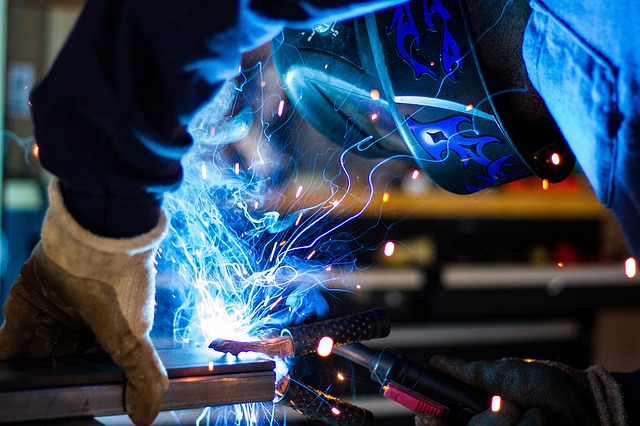Welding
Welding is a technique that can be used to join metallic components through the application of heat. It produces a secure and strong joint by combining two metals into one rather than other processes such as brazing and soldering that bond the pieces together.
Welded joints must be carefully designed with the expected forces, and the type and magnitude of the loads to which it will be subject in mind. The type of joint required – whether butt, lap, T, corner or edge – will determine the type of welding process.
Pressure welding involves applying external pressure to produce joints at temperatures either above or below the melting point. This technique is typically used on highly-ductile metals or those that become more ductile with the application of increasing heat. The two metallic components must be very clean and free of oxides to ensure the strongest possible joint. Some of the most common pressure welding processes include:
- Induction welding: For pipes.
- Inertial welding: For high-strength alloys.
- Cold pressure welding: For creating joints between sheets, wires, and so on.
- Explosive (or percussion) welding: For joints between dissimilar metals.
- Ultrasonic welding: For thin sheets.
- Friction welding: For joints between similar metals.
Fusion welding involves heating the edges of the metal components to above the melting point. No external pressure is used and a filler metal may or may not be used, as may inert gases be used, which can enhance the quality of the weld. Once the fused weld pool has solidified, the welded joint is complete. Suitable metals for fusion welding are those that are, to a certain level, mutually soluble in a solid state.
Welding operatives must be equipped with welding gloves, suitable eye protection, and a fire extinguisher. Sparks can be produced when welding, and so the area around the activity must be kept clear of flammable items.
[edit] Related articles on Designing Buildings Wiki
- Adhesive.
- Bolt.
- Cable tie.
- Clamp
- Cramp.
- Failure of metals.
- Industrial fasteners market.
- Inspections focus on occupational lung disease.
- Nut.
- Major cast metal components.
- Metal fabrication.
- Rebar.
- Safe2Torch.
- Screw.
- Soldering.
- Structural steelwork.
- The importance of welding assurance.
- Types of fixings.
- Washer.
- Welding consumables.
- Welding equipment market.
- Welding products market.
Featured articles and news
The history of building regulations
A story of belated action in response to crisis.
Moisture, fire safety and emerging trends in living walls
How wet is your wall?
Current policy explained and newly published consultation by the UK and Welsh Governments.
British architecture 1919–39. Book review.
Conservation of listed prefabs in Moseley.
Energy industry calls for urgent reform.
Heritage staff wellbeing at work survey.
A five minute introduction.
50th Golden anniversary ECA Edmundson apprentice award
Showcasing the very best electrotechnical and engineering services for half a century.
Welsh government consults on HRBs and reg changes
Seeking feedback on a new regulatory regime and a broad range of issues.
CIOB Client Guide (2nd edition) March 2025
Free download covering statutory dutyholder roles under the Building Safety Act and much more.
AI and automation in 3D modelling and spatial design
Can almost half of design development tasks be automated?
Minister quizzed, as responsibility transfers to MHCLG and BSR publishes new building control guidance.
UK environmental regulations reform 2025
Amid wider new approaches to ensure regulators and regulation support growth.
The maintenance challenge of tenements.
BSRIA Statutory Compliance Inspection Checklist
BG80/2025 now significantly updated to include requirements related to important changes in legislation.























